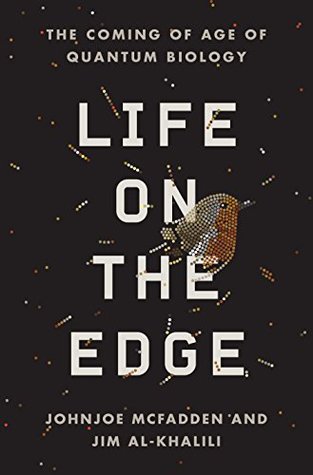More on this book
Community
Kindle Notes & Highlights
Each DNA strand was found to be a kind of molecular string made up of atoms of phosphorus, oxygen and a sugar called deoxyribose, with chemical structures called nucleotides*6 strung out like beads on that string. These nucleotide beads come in four varieties: adenine (A), guanine (G), cytosine (C) and thymine (T),
Schrödinger argued that it is not only the gas laws that derive their accuracy from the statistical properties of large numbers; all the laws of classical physics and chemistry—including the laws governing the dynamics of fluids or chemical reactions—are based on this “averaging of large numbers” or “order from disorder” principle. But, although a normal-sized balloon filled with trillions of air molecules will always obey the gas laws, a microscopic balloon, one so tiny it is filled with only a handful of air molecules, will not. This is because, even at constant temperature, this handful of
...more
This process by which random molecular motion disrupts carefully aligned quantum mechanical systems is known as decoherence, and it rapidly wipes out the weird quantum effects in big inanimate objects.
Everything that living things do can be understood in terms of the jiggling and wiggling of atoms … RICHARD FEYNMAN1
All quantum entities, whether fundamental particles or the atoms and molecules composed of these particles, display coherent wave-like behavior so that they can interfere with themselves. In this quantum state they can exhibit all the weird quantum behaviors, such as being in two places at once, spinning in two directions at once, tunneling through impenetrable barriers or possessing spooky entangled connections with a distant partner.
But then, why can’t you or I, ultimately composed as we are of quantum particles, be in two places at once, something that would certainly be extremely useful on a busy day? The answer on one level is very simple: the bigger and more massive a body is, the smaller will its wave-like nature be, and something the size and mass of a human, or indeed anything large enough to be visible with the naked eye, will have a quantum wavelength so tiny as to have no measurable effect. But more deeply, you can think of each atom in your body as being observed, or measured, by all the other atoms around it,
...more
By comparing photosynthesis in plants with the respiration (burning our food) that takes place in our own cells, discussed in the last chapter, you can see that, under the skin, animals and plants are not so different. The essential distinction lies in where we, and they, get the fundamental building blocks of life. Both need carbon, but plants obtain it from air whereas we get it from organic sources, such as the plants themselves. Both need electrons to build biomolecules: we burn organic molecules to capture their electrons, while plants use light to burn water to capture its electrons. And
...more
We have now discovered that the answer seems to be that living systems don’t try to avoid molecular vibration; instead, they dance to its beat.


